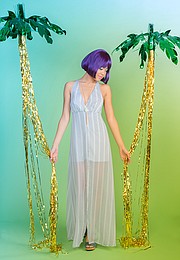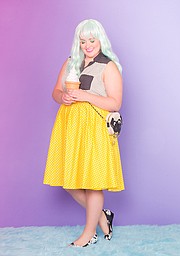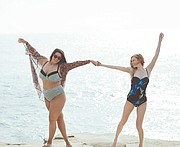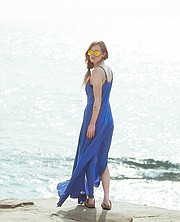TESTING OFFLINE MODEL
ModCloth Takes Experimental Steps Offline
Online retailer ModCloth has been defying bricks-and-mortar retail with more than $100 million in annual revenue with its online business model, but that’s about to change.
The company’s chief executive officer, Matt Kaness, described 2015 as an “experimental” year for ModCloth. Kaness said the company plans to keep exploring bricks-and-mortar in the future, but there is no concrete strategy set yet. “We’re looking to test other formats before we make any big decisions around what the future of offline is,” Kaness said. “Right now, we’re still concepting it.”
Kaness was hired in January 2014 to help set up company spending and resources and further the lifestyle brand’s strength and reach. While technology continues to be an integral part of the business, ModCloth is exploring the possibilities of taking its online world into the real world.
In early April, ModCloth experimented with bricks-and-mortar retail by turning the lobby of its downtown Los Angeles office into a three-day pop-up shop. At the pop-up, customers could try on clothing samples and talk styling with employees. ModCloth did not actually stock product besides a few small home goods but offered free two-day shipping on all goods purchased.
The experiment was successful enough to roll out the concept to other cities this year and next, although a company spokesperson said dates and locations are still being determined.
ModCloth began was a project by high-school sweethearts Susan Gregg and Eric Koger in 2002, and they continued to grow the business from their dorm rooms at Carnegie Mellon University in Pittsburgh. Now married, Gregg (now Gregg Koger) serves as chief creative officer. Koger served as CEO until Kaness was hired. The company employs more than 500 in offices in Pittsburgh, San Francisco and Los Angeles.
ModCloth releases up to 50 new products every day and is backed by $48 million in venture capital. The e-tailer carries more than 7,500 designs from more than 1,200 brands at any one time. The company’s growing private-label business, which began in the fall of 2013, also offers a broad range of sizes, including plus. While the private-label side of the business still trails behind the branded business in overall revenue, the company plans to grow the private-label business over the next few years.
The company drives engagement with its customers through multiple programs beyond affiliates. One of its successful programs is “Be the Buyer,” which was established in late 2009 and invites customers to vote for the products they want to see on the site. To date, they have garnered more than 21 million votes. Another program that has been a hit is “Fit-For-Me,” which is a community-fueled feature in which users enter their measurements in order to see top-rated products recommended by other customers who are similar in size. “Fit-For-Me” was established in November 2013.
Another successful strategy has been the company’s approach to the size range it offers. The retailer strives to make a point that it carries sizes for all women and hires models ofall sizes to showcase its clothing. The company’s“#fashiontruth” campaign “celebrates the individual beauty of all women,” and as part of its efforts, ModCloth signed the Truth in Advertising pledge for the Brave Girls Alliance “to encourage fashion companies and advertisers to stop excessive and harmful photoshopping,” according to a company spokesperson.


























